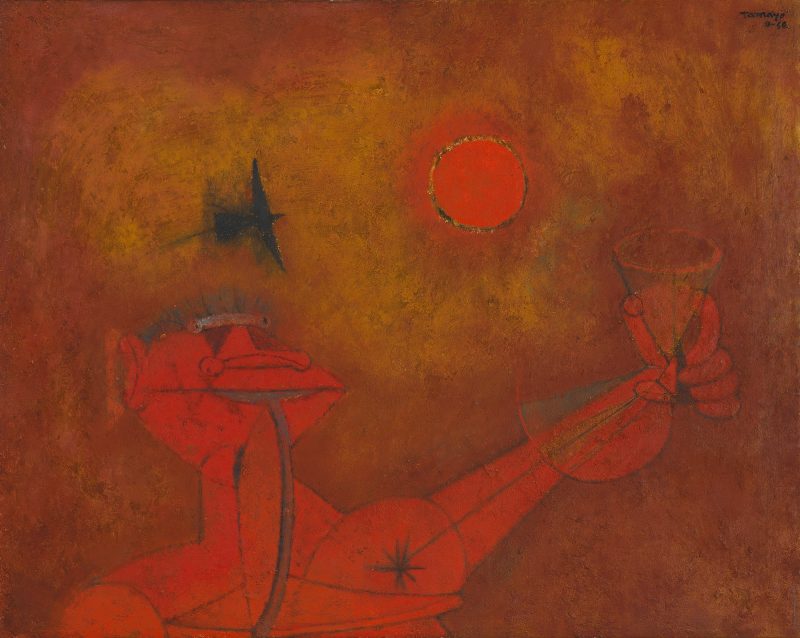
Toast to the Sun
Tamayo, Rufino
1956
Artwork Information
-
Title:
Toast to the Sun
-
Artist:
Tamayo, Rufino
-
Artist Bio:
Mexican, 1899–1991
-
Date:
1956
-
Medium:
Oil on linen
-
Dimensions:
31 3/4 x 39 5/8 in.
-
Credit Line:
Wichita Art Museum, Roland P. Murdock Collection
-
Object Number:
M153.58
-
Display:
Not Currently on Display
About the Artwork
In a career that took him from modest beginnings as the son of artisans in Oaxaca de Juárez, Mexico, to a kind of celebrity status among the artistic avant-garde of Mexico City, New York, and Paris, Rufino Tamayo created an influential stylistic synthesis of European modernism and the art of ancient Mexican Indian cultures. The Wichita Art Museum acquired Toast to the Sun in recognition of Tamayo’s impact upon both contemporary and future trends in the painting of the United States, including surrealist imagery, abstract expressionism, and color field painting.
Although Tamayo personally identified with the goal of fellow Mexican artists, particularly the mural painters, José Clemente Orozco, Diego Rivera, and David Alfaro Siqueiros, who wanted to reclaim their pre-conquest native cultural identity, he disdained the overt social-political narratives of the muralists. Tamayo instead chose to emphasize the modernist goal of tapping primitive forms and ideas to create an art of greater potency and authenticity. He delved into the treasure trove of ancient Mexican Indian mythology and imagery as well as into contemporary Mexican folk idiom to develop a personalized symbolic vocabulary with which to address universal themes of human conflict, struggle, and aspiration. Tamayo’s mature style combined a flat-plane/linear geometric conception of form with an expressive use of three-dimensional surface texture and brilliant decorative color that he applied to a select repertoire of motifs: human figures, animals, birds, celestial bodies, constellations, fruits, and simple domestic objects.
Toast to the Sun aptly displays the beauty and verve of Tamayo’s distinctive analogy of modern and primitive aesthetics. In this painting a strange polyglot figure—part monster, hero, geometer’s compass, part hand-rolled clay doll—jubilantly lifts a pulque cup skyward into a vast expanse of open space framing the molten white disk of the sun. A bird soars over the head of the monster, its crisp, midnight blue silhouette shedding a mist of blurred coloring as it arcs gracefully toward the white orb. The mythic associations of sun, bird, whether eagle or hummingbird, pulque cup and Maguey, sacred tree of life, indicates that the viewer is in the presence of the god Huitzilopochtli, Aztec god of war, death and regeneration, and tribal deity of the Mexican people who settled the Basin of Mexico in the thirteenth century.
In a reversal of expectations the god’s body projects a luminous glow while the heavens around him evoke the warm, earthy sensations of baked adobe in its opaque density of brown, red, and ochre hues and its rough granular texture. The looming figure, seen close-up as a bust of head, shoulders and raised arm, seems to penetrate this heavy matter with the force of pure energy and light.